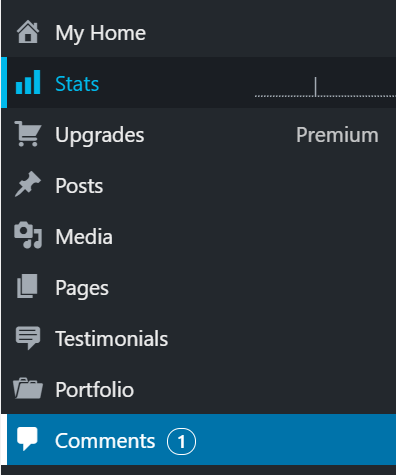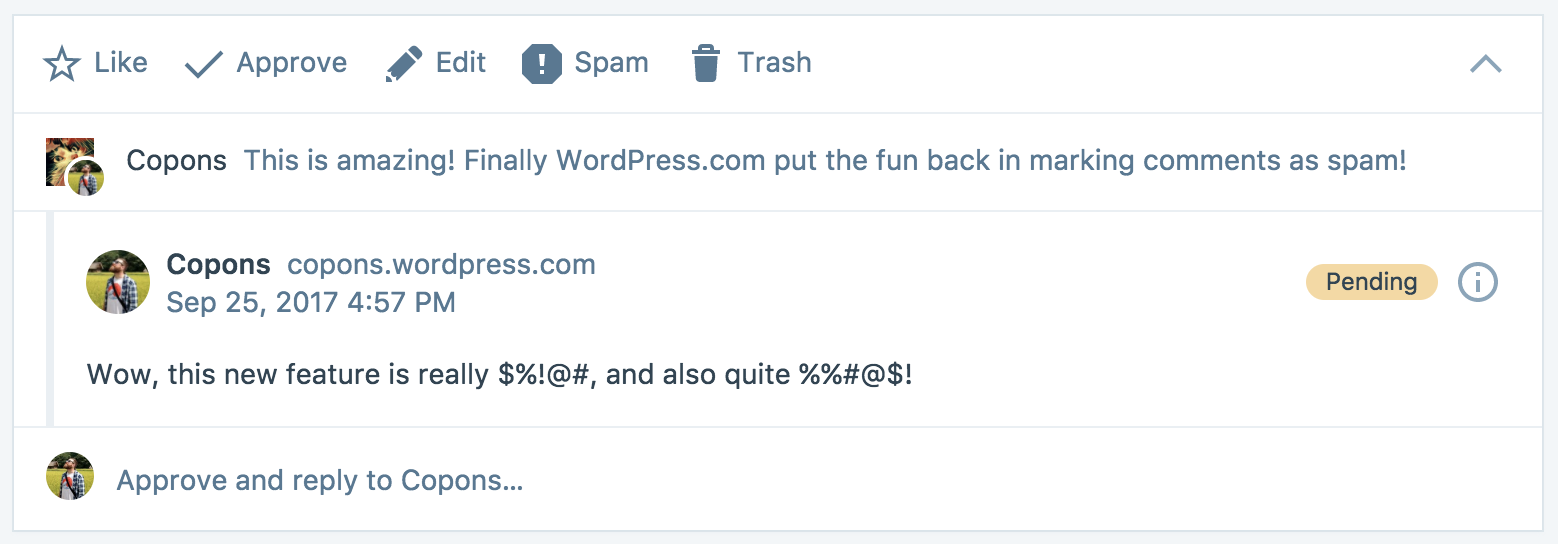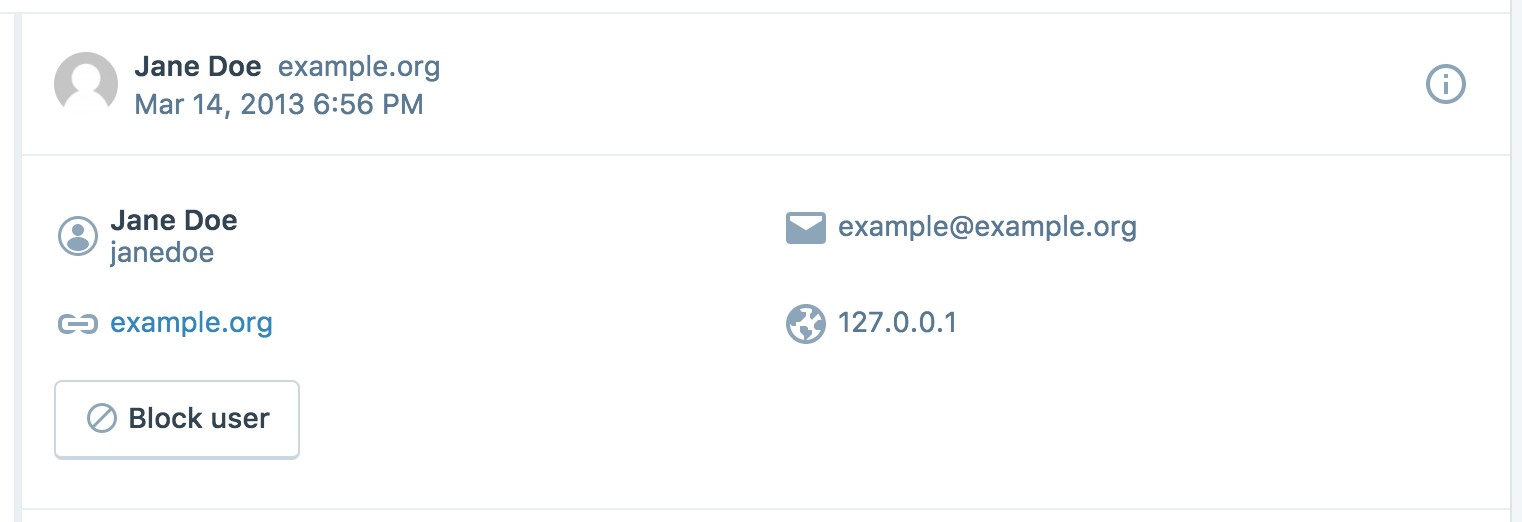How To Disable Comments For Wordpress Blog Post
Comments are a way for visitors to add feedback and reply to your posts and pages. If you choose to enable comments on your site, then a comment form will appear at the bottom for people to respond to what you have written.
Table of Contents
In Settings
You can enable or disable comments on all future posts by going to Settings → Discussion.
Under "Default article settings," toggle on or off the option to "Allow people to post comments on new articles."

On a Post or Page
You can enable or disable comments on a specific post you've already published. Follow these steps:
- Click on Posts or Pages in your dashboard.
- Click on the title of post or page you want to enable (or disable) comments on.
- In the settings sidebar on the right, find and open the Discussion tab.
- Select Allow Comments to enable comments, or deselect the option in order to disable comments:

On Pages, comments are disabled by default, but you can turn them on using the same setting as shown above.
For a Group of Posts or Pages
If you would like to enable/disable comments for a group of posts or pages, go to WP Admin → Posts or WP Admin → Pages and follow the directions for Bulk Editing.
↑ Table of Contents ↑
You can allow only registered WordPress.com users to comment, or you can allow anyone to comment. If you allow anyone to comment, you can choose whether the name and email fields are required or not.
These options are available on the Settings → Discussion screen:
- Comment author must fill out name and e-mail
Makes the name and email address fields required fields. These fields are only shown to someone who is not logged in to WordPress.com. - Users must be registered and logged in to comment
Use this option if you only want to allow comments from people who are logged in. This includes WordPress.com users, and all social network accounts. This prevents people from entering their own arbitrary details.
To learn more about all the available settings at Settings → Discussion, see the Discussion Settings guide.
↑ Table of Contents ↑
To post a comment, open the individual post and scroll to the bottom. As long as the site owner has enabled comments, you'll see a box to write and share your comment.
↑ Table of Contents ↑
As the site owner, you are in complete control of the comments left on your site. To see and manage comments on your site, click on Comments in your dashboard as shown here:

At the top of the Comments screen, you will find tabs for Pending, Approved, Spam, and Trashed, as well as sorting options for Newest and Oldest, and Bulk Edit mode.

When viewing your list of comments, you'll see previews of the comments to make it easy to scan them quickly. Pending comments (comments that have been submitted, but don't currently appear on your site) are highlighted in yellow, to make them easy to spot:


Clicking anywhere on a preview will expand it to display the full comment.
Here's an illustration of an expanded comment, followed by an explanation of its parts from top to bottom.

- Comment actions: Like, Approve, Edit, Spam, Trash (see below for detail).
- Collapse comment details button: the little arrow in the upper right will close the comment back down to the preview.
- A link to the blog post or, if the comment is a reply to another comment, an excerpt of the original comment, so you have context for the conversation.
- Comment author's name and website.
- Date and time the comment was left.
- The pending label, if the comment is waiting to be approved.
- Additional user information button (see below for detail).
- The comment text itself.
- The reply option.
Additional User Information
Clicking on the user info button will open a new section containing additional information about the comment author.

The Block User button will add the comment author to the site blacklist, blocking them from writing new comments on your site.
You'll find all the actions you can take on a comment at the top of the expanded comment. Use these buttons to like/unlike, approve/unapprove, edit, mark as spam, move to trash, or permanently delete comments. Clicking Like or Approve once will perform those actions; clicking a second time will un-do the action.

These actions are contextual and change depending on the comment status:
- Pending comments: Like, Approve, Edit, Mark as Spam, Move to Trash
- Approved comments: Like, Unapprove, Edit, Mark as Spam, Move to Trash
- Spam comments: Approve, Delete Permanently
- Trash comments: Approve, Mark as Spam, Delete Permanently
This is a view of a comment after clicking Edit on a comment:

Bulk Edit Mode
Click on the Bulk Edit button in the top right corner of Comments to enable the Bulk Edit mode:

Click anywhere on a comment to select it, and then perform actions on all selected comments at once. The actions include approving, unapproving, deleting, and marking comments as spam all at once.

↑ Table of Contents ↑
If your site has a lot of comments, it can be useful to search through all of your site's comments to find a specific comment you're looking for. To search through your comments, follow these steps:
- Click on Comments in your dashboard.
- Click on Screen Options in the top right corner, and select 'Classic View'.
- Using the search box at the top of the screen, you can search by keyword, the commenter's name, or the commenter's IP address.
↑ Table of Contents ↑
Unwanted Comments and Comment Spam
From time to time, you may receive unwanted comments on your site. There are many ways to protect your WordPress.com site from unwanted comments:
- All WordPress.com sites are protected by the Akismet comment spam filter, automatically marking spam comments for you. If you notice that your comments are incorrectly marked as spam, please contact Akismet support and mention that Akismet is catching your comments by mistake.
- You can control whether comments are automatically approved or if they need to be reviewed before they are published. This makes sure no comment is visible on your site wthout your approval.
- You can add rules for comment moderation to control which comments get marked as pending approval
- You can add rules to the disallowed comments section to automatically mark some comments as spam.
- If you turn on email notifications, then you can watch those messages for spam and delete them quickly if you find any that get through the comment spam filter.
↑ Table of Contents ↑
It is not possible to edit or delete any comments you have left on other WordPress.com blogs. Blog owners are in full control of the comments on their blogs, so you can try contacting the blog owner and ask them to edit or delete a comment for you. If the blog owner has not posted any contact information, you can try leaving a short comment asking how to contact them directly.
↑ Table of Contents ↑
Additional guides and commenting features include:
- Discussion Settings
- Comment notification emails
- Comment reply by email
- Comment likes
- Embedding in comments
- Following comments by email
- Pingbacks
How To Disable Comments For Wordpress Blog Post
Source: https://wordpress.com/support/comments/
Posted by: bermangreirrom.blogspot.com

0 Response to "How To Disable Comments For Wordpress Blog Post"
Post a Comment